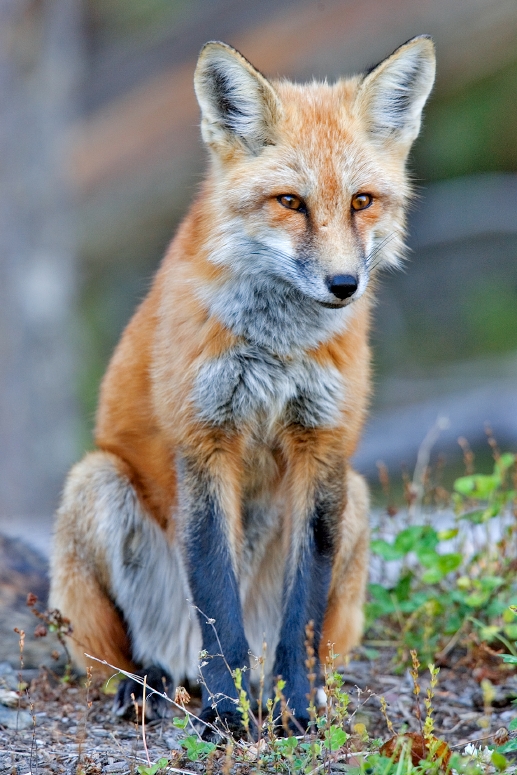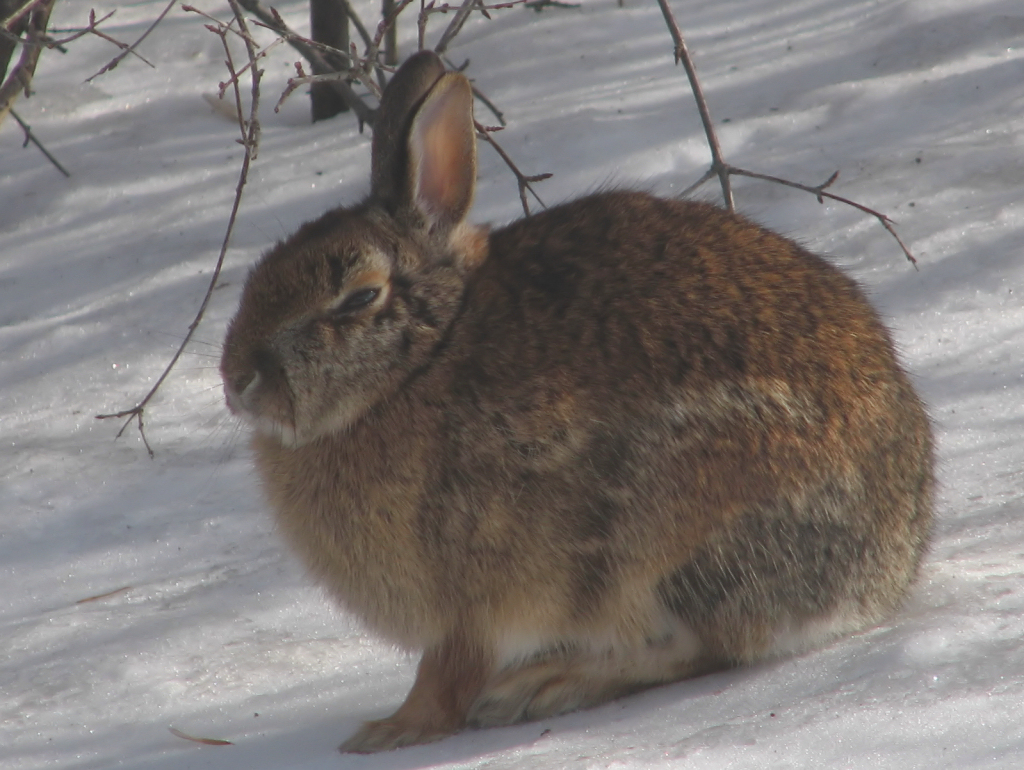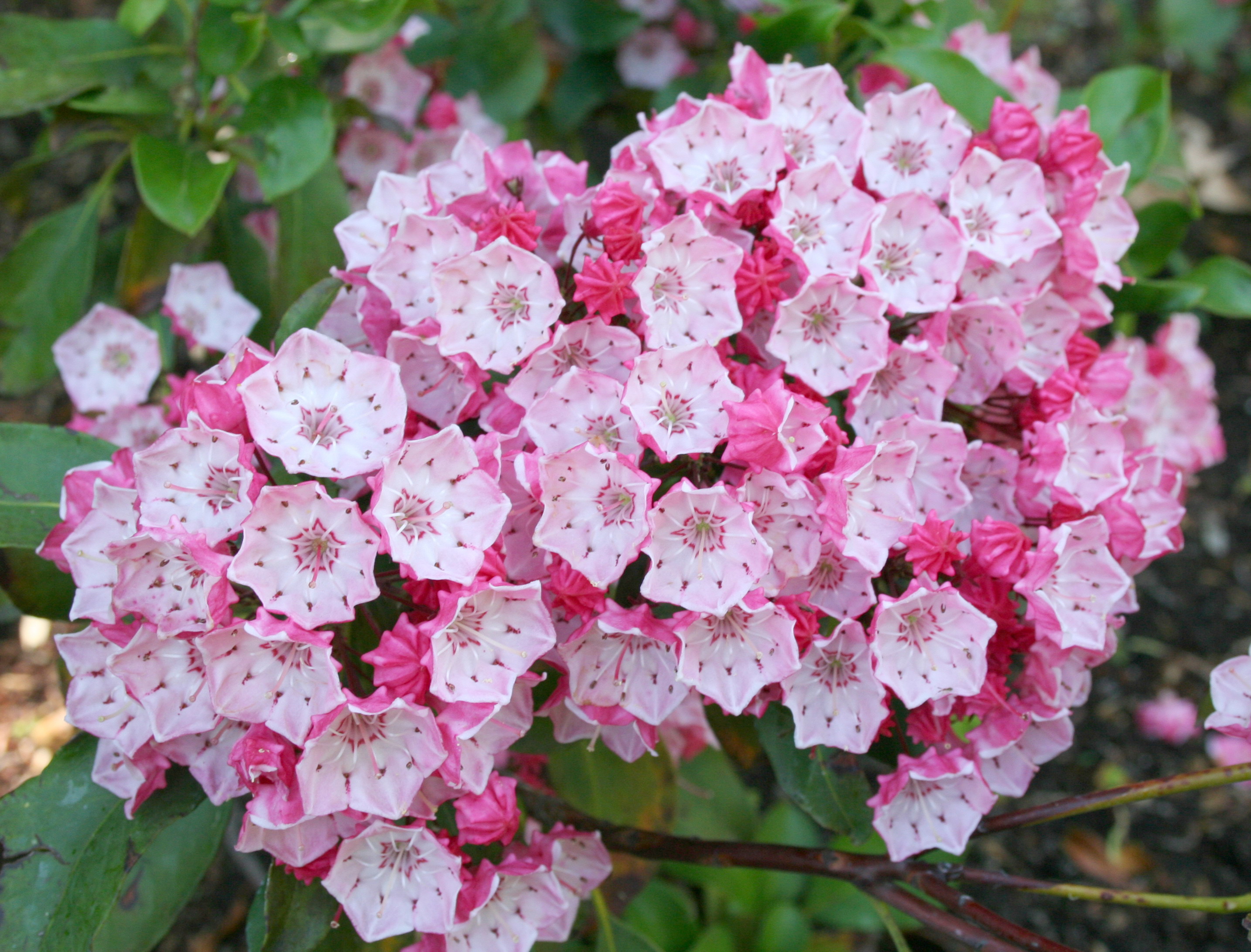|
Appalachian Hemlock–northern Hardwood Forest
The Appalachian hemlock–northern hardwood forest is a forest system found in the Appalachian Mountains of New Hampshire, Vermont, Massachusetts, Connecticut, New York, New Jersey, Pennsylvania, Maryland, Virginia, West Virginia and western North Carolina. These forests occur in deep coves, moist flats, and ravines. Flora Appalachian hemlock–northern hardwood forests include yellow birch (''Betula alleghaniensis''), mountain maple (''Acer spicatum''), sugar maple (''Acer saccharum''), and beech (''Fagus grandifolia''). These trees often form a deciduous canopy, but are sometimes mixed with hemlock (''Tsuga canadensis'') or white pine (''Pinus strobus''). Other common trees include oaks (most commonly red oak (''Quercus rubra'')), tulip tree (''Liriodendron tulipifera''), black cherry (''Prunus serotina''), and sweet birch (''Betula lenta''). Mountain laurel (''Kalmia latifolia''), hophornbeam (''Ostrya virginiana''), and rhododendron (''Rhododendron'' spp.) are found in the under ... [...More Info...] [...Related Items...] OR: [Wikipedia] [Google] [Baidu] |
Appalachian Mountains
The Appalachian Mountains, often called the Appalachians, (french: Appalaches), are a system of mountains in eastern to northeastern North America. The Appalachians first formed roughly 480 million years ago during the Ordovician Period. They once reached elevations similar to those of the Alps and the Rocky Mountains before experiencing natural erosion. The Appalachian chain is a barrier to east–west travel, as it forms a series of alternating ridgelines and valleys oriented in opposition to most highways and railroads running east–west. Definitions vary on the precise boundaries of the Appalachians. The United States Geological Survey (USGS) defines the ''Appalachian Highlands'' physiographic division as consisting of 13 provinces: the Atlantic Coast Uplands, Eastern Newfoundland Atlantic, Maritime Acadian Highlands, Maritime Plain, Notre Dame and Mégantic Mountains, Western Newfoundland Mountains, Piedmont, Blue Ridge, Valley and Ridge, St. Lawrence Valley, Appalac ... [...More Info...] [...Related Items...] OR: [Wikipedia] [Google] [Baidu] |
Pinus Strobus
''Pinus strobus'', commonly called the eastern white pine, northern white pine, white pine, Weymouth pine (British), and soft pine is a large pine native to eastern North America. It occurs from Newfoundland, Canada west through the Great Lakes region to southeastern Manitoba and Minnesota, United States, and south along the Appalachian Mountains and upper Piedmont to northernmost Georgia and perhaps very rarely in some of the higher elevations in northeastern Alabama. It is considered rare in Indiana. The Native American Haudenosaunee named it the "Tree of Peace". It is known as the "Weymouth pine" in the United Kingdom, after Captain George Weymouth of the British Royal Navy, who brought its seeds to England from Maine in 1605. Distribution ''P. strobus'' is found in the nearctic temperate broadleaf and mixed forests biome of eastern North America. It prefers well-drained or sandy soils and humid climates, but can also grow in boggy areas and rocky highlands. In mixed ... [...More Info...] [...Related Items...] OR: [Wikipedia] [Google] [Baidu] |
American Red Fox
The American red fox (''Vulpes vulpes fulva'') is a North American subspecies of the red fox. It is the largest of the true foxes and one of the most widely distributed members of the order Carnivora, occurring in North America. This subspecies is most likely the ancestor of the domesticated silver fox. North American colonization and native status Current literature discusses whether or not the red fox is native to North America, with some research suggesting that nearly all red fox populations in North America are not native. ''Vulpes vulpes '' is usually seen either as an exotic species introduced by Europeans during the colonization of the North American continent or as a hybrid between European and North American red foxes. While it is claimed that ''Vulpes vulpes fulva'' stems from a non-native population that spread westward from European introduction, a historical analysis of firsthand accounts does not support this claim. Phylogeographical and genetic analysis of ... [...More Info...] [...Related Items...] OR: [Wikipedia] [Google] [Baidu] |
Groundhog
The groundhog (''Marmota monax''), also known as a woodchuck, is a rodent of the family Sciuridae, belonging to the group of large ground squirrels known as marmots. The groundhog is a lowland creature of North America; it is found through much of the Eastern United States, across Canada and into Alaska. It was first scientifically described by Carl Linnaeus in 1758. The groundhog is also referred to as a chuck, wood-shock, groundpig, whistlepig, whistler, thickwood badger, Canada marmot, monax, moonack, weenusk, red monk, land beaver, and, among French Canadians in eastern Canada, siffleux. The name "thickwood badger" was given in the Northwest to distinguish the animal from the American badger, prairie badger. Monax (''Móonack'') is an Algonquian languages, Algonquian name of the woodchuck, which means "digger" (cf. Delaware languages, Lenape ''monachgeu''). Young groundhogs may be called chucklings. The groundhog, being a lowland animal, is exceptional among marmots. Oth ... [...More Info...] [...Related Items...] OR: [Wikipedia] [Google] [Baidu] |
Eastern Cottontail
The eastern cottontail (''Sylvilagus floridanus'') is a New World cottontail rabbit, a member of the family Leporidae. It is the most common rabbit species in North America. Distribution The eastern cottontail can be found in meadows and shrubby areas in the eastern and south-central United States, southern Canada, eastern Mexico, Central America and northernmost South America. It is also found on the Caribbean island of Margarita. It is abundant in Midwest North America. Its range expanded north as forests were cleared by settlers.Godin, Alfred J. (1977). ''Wild mammals of New England''. Baltimore, MD: The Johns Hopkins University Press Originally, it was not found in New England, but it has been introduced and now competes for habitat there with the native New England cottontail. It has also been introduced into parts of Oregon, Washington, and British Columbia. In the 1950s and 1960s, the eastern cottontail was introduced to France and northern Italy, where it displayed a rapid ... [...More Info...] [...Related Items...] OR: [Wikipedia] [Google] [Baidu] |
Eastern Chipmunk
The eastern chipmunk (''Tamias striatus'') is a chipmunk species found in eastern North America. It is the only living member of the chipmunk genus ''Tamias''. Etymology The name "chipmunk" comes from the Ojibwe word ''ajidamoo'' (or possibly ''ajidamoonh'', the same word in the Ottawa dialect of Ojibwe), which translates literally as "one who descends trees headlong." First described by Mark Catesby in his 1743 ''The Natural History of Carolina, Florida, and the Bahama Islands'', the chipmunk was eventually classified as ''Sciurus striatus'' by Linnaeus, meaning "striped squirrel" in Latin. The scientific name was changed to ''Tamias striatus'', meaning "striped steward," by Johann Illiger in 1811. Description A small species, it reaches about in length including the tail, and a weight of . It has reddish-brown fur on its upper body and five dark brown stripes contrasting with light brown stripes along its back, ending in a dark tail. It has lighter fur on the lower part ... [...More Info...] [...Related Items...] OR: [Wikipedia] [Google] [Baidu] |
Eastern Gray Squirrel
The eastern gray squirrel (''Sciurus carolinensis''), also known, particularly outside of North America, as simply the grey squirrel, is a tree squirrel in the genus ''Sciurus''. It is native to eastern North America, where it is the most prodigious and ecologically essential natural forest regenerator. Widely introduced to certain places around the world, the eastern gray squirrel in Europe, in particular, is regarded as an invasive species. In Europe, ''Sciurus carolinensis'' is included since 2016 in the list of Invasive Alien Species of Union concern (the Union list). This implies that this species cannot be imported, bred, transported, commercialized, or intentionally released into the environment in the whole of the European Union. Distribution ''Sciurus carolinensis'' is native to the eastern and midwestern United States, and to the southerly portions of the central provinces of Canada. The native range of the eastern gray squirrel overlaps with that of the fox squirre ... [...More Info...] [...Related Items...] OR: [Wikipedia] [Google] [Baidu] |
White-tailed Deer
The white-tailed deer (''Odocoileus virginianus''), also known as the whitetail or Virginia deer, is a medium-sized deer native to North America, Central America, and South America as far south as Peru and Bolivia. It has also been introduced to New Zealand, all the Greater Antilles in the Caribbean (Cuba, Jamaica Jamaica (; ) is an island country situated in the Caribbean Sea. Spanning in area, it is the third-largest island of the Greater Antilles and the Caribbean (after Cuba and Hispaniola). Jamaica lies about south of Cuba, and west of His ..., Hispaniola, and Puerto Rico), and some countries in Europe, such as the Czech Republic, Finland, France, Germany, Romania and Serbia. In the Americas, it is the most widely distributed wild ungulate. In North America, the species is widely distributed east of the Rocky Mountains as well as in southwestern Arizona and most of Mexico, except Baja California peninsula, Lower California. It is mostly displaced by the black ... [...More Info...] [...Related Items...] OR: [Wikipedia] [Google] [Baidu] |
Rhododendron
''Rhododendron'' (; from Ancient Greek ''rhódon'' "rose" and ''déndron'' "tree") is a very large genus of about 1,024 species of woody plants in the heath family (Ericaceae). They can be either evergreen or deciduous. Most species are native to eastern Asia and the Himalayan region, but smaller numbers occur elsewhere in Asia, and in North America, Europe and Australia. It is the national flower of Nepal, the state flower of Washington and West Virginia in the United States, the state flower of Nagaland in India, the provincial flower of Jiangxi in China and the state tree of Sikkim and Uttarakhand in India. Most species have brightly colored flowers which bloom from late winter through to early summer. Azaleas make up two subgenera of ''Rhododendron''. They are distinguished from "true" rhododendrons by having only five anthers per flower. Species Description ''Rhododendron'' is a genus of shrubs and small to (rarely) large trees, the smallest species growing to t ... [...More Info...] [...Related Items...] OR: [Wikipedia] [Google] [Baidu] |
Ostrya Virginiana
''Ostrya virginiana'', the American hophornbeam, is a species of ''Ostrya'' native to eastern North America, from Nova Scotia west to southern Manitoba and eastern Wyoming, southeast to northern Florida and southwest to eastern Texas. Populations from Mexico and Central America are also regarded as the same species, although some authors prefer to separate them as a distinct species, ''Ostrya guatemalensis''. Other names include eastern hophornbeam, hardhack (in New England), ironwood, and leverwood. Description American hophornbeam is a small deciduous understory tree growing to tall and trunk diameter. The bark is brown to gray-brown, with narrow shaggy plates flaking off, while younger twigs and branches are smoother and gray, with small lenticels. Very young twigs are sparsely fuzzy to thickly hairy; the hairs (trichomes) drop off by the next year. The leaves are ovoid-acute, long and broad, pinnately veined, with a doubly serrated margin. The upper surface is mostly h ... [...More Info...] [...Related Items...] OR: [Wikipedia] [Google] [Baidu] |
Kalmia Latifolia
''Kalmia latifolia'', the mountain laurel, calico-bush, or spoonwood, is a species of flowering plant in the heath family Ericaceae, that is native to the eastern United States. Its range stretches from southern Maine south to northern Florida, and west to Indiana and Louisiana. Mountain laurel is the state flower of Connecticut and Pennsylvania. It is the namesake of Laurel County in Kentucky, the city of Laurel, Mississippi, and the Laurel Highlands in southwestern Pennsylvania. Growth ''Kalmia latifolia'' is an evergreen shrub growing tall. The leaves are 3–12 cm long and 1–4 cm wide. The flowers are hexagonal, sometimes appearing to be pentagonal, ranging from light pink to white, and occur in clusters. There are several named cultivars that have darker shades of pink, red and maroon. It blooms in May and June. All parts of the plant are poisonous. The roots are fibrous and matted. The plant is naturally found on rocky slopes and mountainous forest areas. I ... [...More Info...] [...Related Items...] OR: [Wikipedia] [Google] [Baidu] |
Betula Lenta
''Betula lenta'' (sweet birch, also known as black birch, cherry birch, mahogany birch, or spice birch) is a species of birch native to eastern North America, from southern Maine west to southernmost Ontario, and south in the Appalachian Mountains to northern Georgia. Characteristics and habitat ''Betula lenta'' is a medium-sized deciduous tree reaching tall, exceptionally to with a trunk up to diameter. Heights of to are more typical. In younger trees the bark is characteristic of most birches, with smooth bark and distinct horizontal lenticels. It is sometimes mistakenly identified as a cherry tree. In older tree specimens the bark (unlike the more commonly known birches) develops vertical cracks into irregular scaly plates revealing rough dark brown bark patterns. This, however, only occurs in mature, or ancient, trees and these specimens are not often identified by the public as ''B. lenta'' due to the difference between the tree's smooth young bark (which the public ... [...More Info...] [...Related Items...] OR: [Wikipedia] [Google] [Baidu] |








